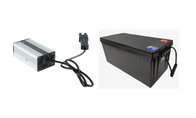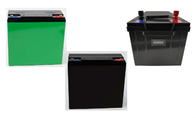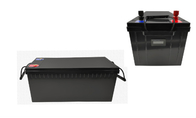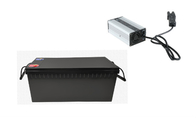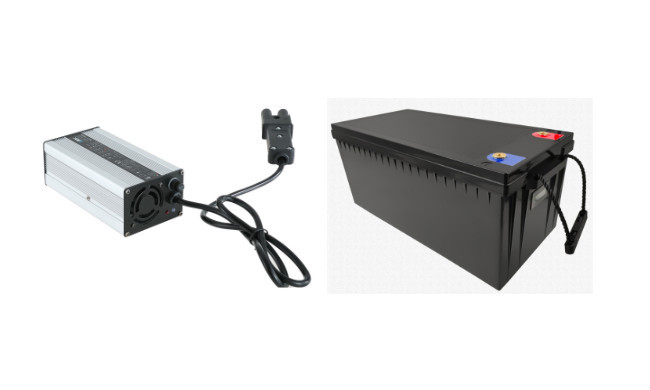Portable Lithium Battery 12 Volt 200ah For Low Speed Tricycle
Three-wheeler

1. Why lithium battery consistency so important?
Harm of inconsistency of lithium batteries:
It is very dangerous that a single lithium battery cell with excessive capacity can cause thermal runaway in case of accidents, sharp reaction inside the battery, and excessive energy can be released nowhere in a short time. Especially in the case of insufficient development of safety technology and control capability, the capacity of each battery cells should be restrained.
The lithium battery pack is composed of a single cell with capacity loss, which conforms to the "barrel principle". The capacity of the worst cell determines the capacity of the whole lithium battery pack.
Life loss, small capacity of the battery cell, each time is full of discharge, excessive output, it is likely to reach the end of life first. At the end of the life of the battery cells, a group of battery cells welded together will die.
2. How to Control the Consistency of 12v Lithium Batteries?
At present, the industry generally adopts lithium battery management system to control the consistency and safety of batteries in the battery pack, so as to protect the 12v lithium battery pack and prolong the service life of the product. The use of lithium battery management system (BMS) can achieve the control of relative consistency of batteries, thus avoiding overcharge and overdischarge which may be caused by inconsistent use of batteries and prolonging the service life of lithium iron phosphate batteries. Battery management system with balancing function links the inconsistency of battery packs to a certain extent, which maximizes the capacity and energy utilization of lithium battery packs
From the analysis of the experimental data, 12v lithium battery pack with BMS is charged by charging and discharging equipment or charger, and the highest voltage usually occurs at the initial stage of constant voltage charging. It is objective that the initial small voltage of the 12v lthium battery in the battery pack is inconsistent. Although the initial voltage is inconsistent, and can be balanced in the constant voltage charging process, the inconsistency of the battery voltage can be adjusted to a certain extent.
However, in the long-term use, the inconsistency of batteries in 12v lithium batteries will be aggravated under the catalysis of temperature field, which may lead to overcharge or overdischarge in the process of charging and discharging. Of course, the management system of lithium batteries will sacrifice the charging and discharging capacity of fractional batteries to ensure the consistency of batteries on the premise of ensuring safety.
Solutions for poor consistency of lithium iron phosphate batteries:
Next, a method to reduce the influence of temperature on battery capacity consistency and accurately measure the actual capacity of lithium iron phosphate cores is provided to improve the capacity consistency of lithium iron phosphate batteries. The steps are as follows:
1. Extract a number of batteries; select the test temperature range, set a number of test temperature nodes uniformly in the test temperature range, and test and count the capacity of each battery under each test temperature node;
2. Select the minimum cell capacity temperature range of lithium iron phosphate battery pack, and linearly fit the capacity value of each battery in this temperature range with the capacity value of the battery at 25 degree.
3. Measure the battery capacity of the batch of batteries with the same capacity grade in the temperature range of lithium battery capacity.
4. According to the fitting equation, the discharge capacity of batch batteries at 25 degree was calculated.
The advantage of this innovation is that the battery capacity value in the range of cell capacity temperature is fitted with the battery capacity value at room temperature 25 degree, and the functional relationship between them is found. According to the functional relationship, the more accurate battery capacity at room temperature 25 degree can be obtained, and the influence of temperature on the capacity consistency of lithium battery packs can be reduced.
| Items |
Parameter |
| Battery Type |
LiFePO4 |
| Nominal Voltage |
12.8V |
| Nominal Capacity |
200Ah |
| Energy |
2.56KWh |
| Internal Resistance |
≤15mΩ |
| Series & Parallel Application |
up to 4 series 4 parallel connected application |
| Limited Charge Voltage |
14.6±0.2V |
| Floating Charge Voltage |
13.8±0.2V |
| Charge Method |
CC/CV |
| Discharge Cut-off Voltage |
10.0V |
| Charge Current |
60A |
| Continuous Discharge Current |
60A |
| Pulse Discharge Current (<3s) |
120A |
| Cycle Life |
> 6000 cycles |
| Dimension (mm) |
Length:525±2 Width:270±2 Height:232±2 |
| Weight |
28Kg |
| Charge Temperature Range |
0~45℃ |
| Discharge Temperature Range |
-20~60℃ |
| Recommended Operating Temperature |
15~35℃ |
| |
|
Built-in BMS
| No. |
Item |
Test Item |
Creterion |
| 1 |
Voltage |
Charging Voltage |
DC:14.4V CC/CV |
| Balance voltage for single cell |
3.50±0.025V |
| 2 |
Current |
Balance voltage for single cell |
35±5mA |
| Current consumption |
≤50μA |
| Charging current |
60A |
| Rated continuous discharging current |
60A (Peak 120A) |
| 3 |
Over charge Protection |
Over charge detection voltage for single cell |
3.65V±0.025V |
| Over charge detection delay time |
0.7S—1.3S |
| Over charge release voltage for single cell |
3.550±0.05V |
| 4 |
Over discharge Protection |
Over discharge detection voltage for single cell |
2.50V±0.07V |
| Over discharge detection delay time |
1.6±0.5S |
| Over discharge release voltage for single cell |
3.00±0.75V |
| 5 |
Over current Protection |
Over current detection current |
500±50A |
| Over current detection delay time |
1.6±0.5S |
| Release condition |
Cut load |
| 6 |
Short Protection |
Detection condition |
Exterior short circuit |
| Detection delay time |
230uS—500uS |
| Release condition |
Cut load |
| 7 |
Resistance |
Protection circuitry (MOSFET) |
≤60mΩ |
| 8 |
Temperature |
Operating Temperature Range |
-40~+85℃ |
| Storage Temperature Range |
-40~+125℃ |




